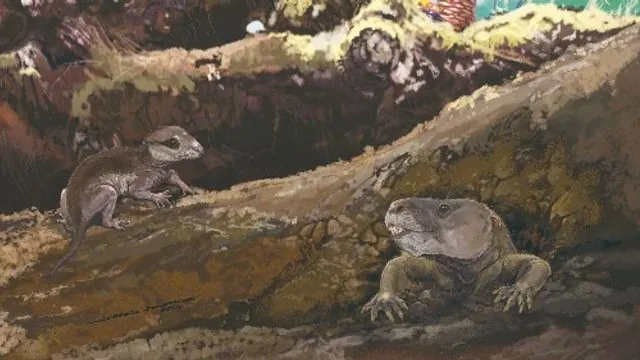
Groundbreaking Brazilian Fossils Challenge Our Understanding of Mammal Evolution!
2024-09-26
A recent discovery from Brazil has unveiled fossils of ancient mammal ancestors—Brasilodon quadrangularis and Riograndia guaibensis—that provide revolutionary insights into the evolution of the mammalian jaw and middle ear, suggesting significant evolutionary developments occurred millions of years earlier than scientists previously believed.
Mammals are unique among vertebrates due to their specialized jaw structure and the presence of three small bones in the middle ear. This transition from the single middle ear bone found in earlier vertebrates has long intrigued researchers. The latest study centers on the evolution of cynodonts, the group of prehistoric species from which modern mammals descended.
For the first time, researchers employed advanced CT scanning techniques to digitally reconstruct the jaw joint of these cynodonts. Their findings revealed that Riograndia guaibensis exhibited a 'mammalian-style' contact between the skull and lower jaw—a feature that existed 17 million years before the previously known oldest example. Interestingly, this specific contact was absent in the more closely related Brasilodon quadrangularis, indicating that the defining characteristics of mammalian jaws may have evolved multiple times among various cynodont groups.
The implications of this discovery are profound. It suggests that mammal predecessors were experimenting with different jaw functions, leading to the independent development of traits viewed as uniquely mammalian across different lineages. The conclusion? The early evolution of mammals was far more dynamic and intricate than the scientific community had ever realized!
Lead researcher James Rawson from the University of Bristol articulated the significance of these findings: “The acquisition of the mammalian jaw contact was a pivotal moment in mammal evolution. Our new Brazilian fossils reveal that diversifying cynodont groups were experimenting with various types of jaw joints, challenging long-held notions about the uniqueness of mammalian features.”
The research highlights that features like the mammalian jaw joint and middle ear bones did not emerge from a single lineage, but evolved in a mosaic-like manner across various cynodont groups. This multifaceted evolution underscores the complexity of the transition from reptilian to mammalian traits.
Co-author Dr. Pam Gill, currently affiliated with the Natural History Museum in London and the University of Bristol, noted the importance of multiple fossil samples for the study’s success. “The combination of recent specimens from Brazil with archived specimens of Oligokyphus enabled a robust reconstruction of the jaw joint, leading to more confident conclusions about the evolutionary history of these features.”
Dr. Agustín Martinelli from Argentina's Museo Argentino de Ciencias Naturales added to the excitement, stating that recent discoveries from Brazil are enriching the understanding of how mammalian characteristics originated and evolved. He expressed optimism regarding ongoing international collaborations that promise further revelations in this area of paleontology.
The research team is enthusiastic about delving deeper into the rich fossil record of South America, which has emerged as a treasure trove of information about mammalian evolution. Professor Marina Soares from Museu Nacional in Brazil remarked on the significance of the region's diverse cynodont forms, stating that nowhere else in the world can we find such a comprehensive array of these ancient relatives of mammals.
In conclusion, the research team is eager to integrate their results with existing data to enhance comprehension of how early jaw joints functioned and ultimately shaped the development of today's mammals. This groundbreaking study not only sheds light on the evolutionary pathways of mammalian traits but also opens new avenues for paleontological research.
As the world of science eagerly anticipates the next chapter in this remarkable discovery, one thing is clear: the journey to unravel the complexities of mammalian evolution is just beginning, and it promises to be full of surprises!




 Brasil (PT)
Brasil (PT)
 Canada (EN)
Canada (EN)
 Chile (ES)
Chile (ES)
 España (ES)
España (ES)
 France (FR)
France (FR)
 Hong Kong (EN)
Hong Kong (EN)
 Italia (IT)
Italia (IT)
 日本 (JA)
日本 (JA)
 Magyarország (HU)
Magyarország (HU)
 Norge (NO)
Norge (NO)
 Polska (PL)
Polska (PL)
 Schweiz (DE)
Schweiz (DE)
 Singapore (EN)
Singapore (EN)
 Sverige (SV)
Sverige (SV)
 Suomi (FI)
Suomi (FI)
 Türkiye (TR)
Türkiye (TR)